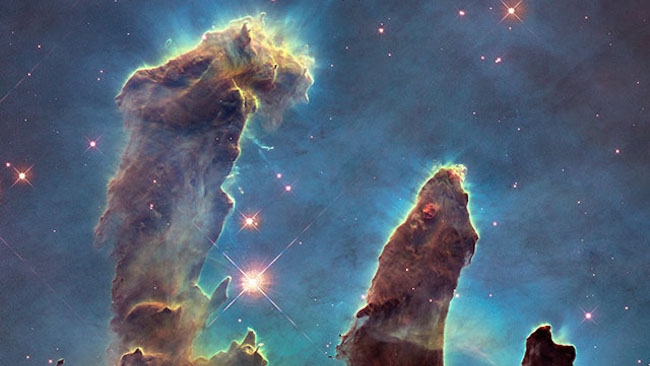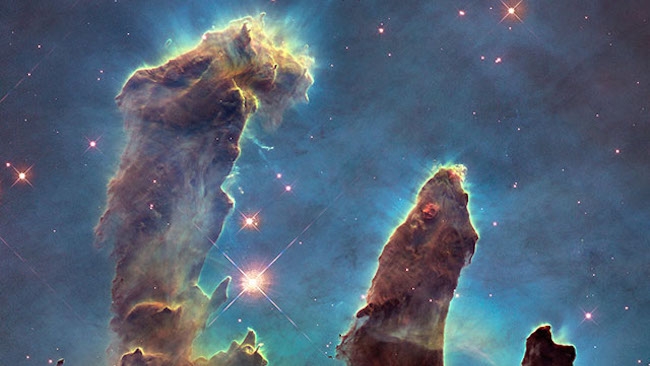
 The iconic Pillars of Creation
The iconic Pillars of Creation
You wouldn’t know it from the picture above, but, as with the original, the 20th Anniversary retake of the original ‘Pillars of Creation’ shot that almost single-handedly defined the Hubble Space Telescope in the public imagination was taken in black and white.
The image shows the gigantic columns of interstellar gas and dust of the Eagle Nebula floating in space some 6,000 light years away, but what this fascinating National Geographic clip reveals is that the Hubble’s cameras capture in black and white as a way of preserving the maximum amount of information available to astronomers.
Zolt Leavy, Imaging Team Lead at the Space Telescope Science Institute, explains how the colour final is then constructed from three separate images taken in the light of emission from different types of atoms. Red shows emission from singly-ionized sulfur atoms; green shows emission from hydrogen, while blue shows light emitted by doubly-ionized oxygen atoms.
Add them all together and you get a science-driven representation of the colour information you would see from a spaceship somewhere out in the constellation Serpens (though Leavy himself admits that from there it takes a bit of fiddling to get quite the image you want).
Tags: Technology


Comments